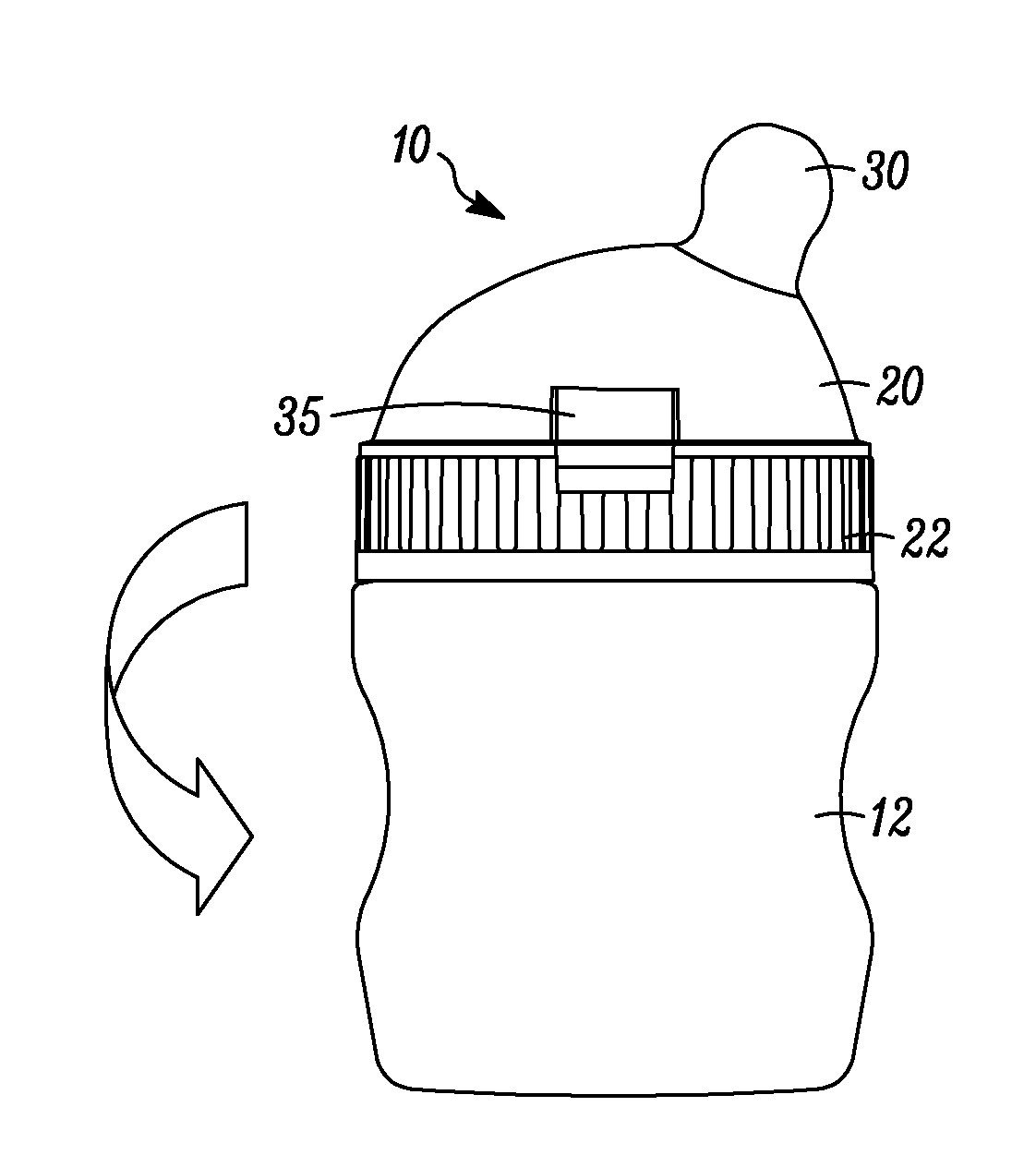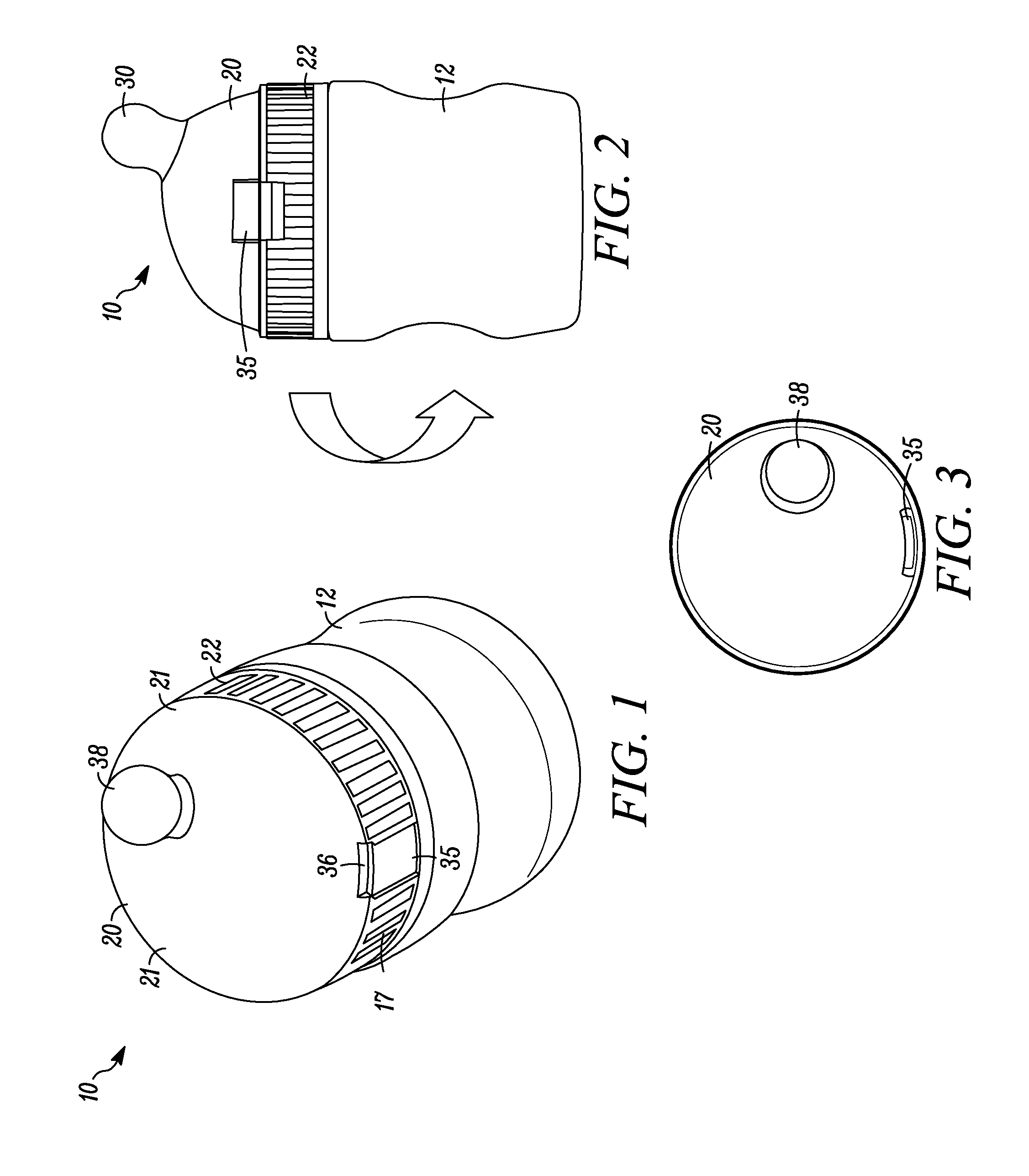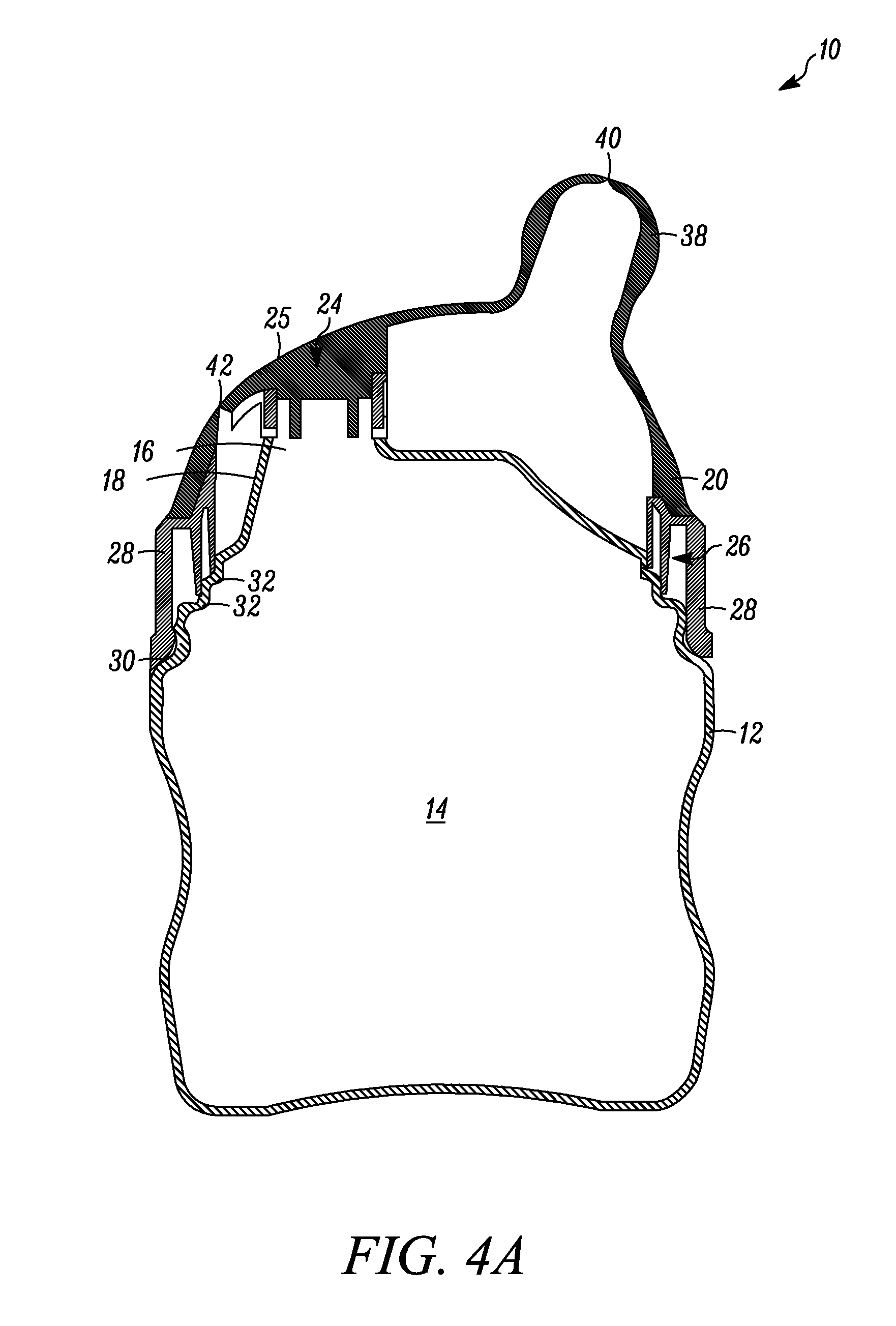Ready to feed container and method
a technology of ready-to-feed containers and containers, which is applied in the field of ready-to-feed containers, can solve the problems of undesirably altering the taste profile of the product, increasing the exposure of the product to tpes, and difficulty in using fat-containing liquid products, such as infant or baby formulas, to achieve the effect of preventing intermixing during storag
- Summary
- Abstract
- Description
- Claims
- Application Information
AI Technical Summary
Benefits of technology
Problems solved by technology
Method used
Image
Examples
Embodiment Construction
[0048]In FIGS. 1-5, a container embodying the present invention is indicated generally by the reference numeral 10. The container 10 comprises a body 12 defining a chamber 14 for receiving a product or substance, and a container closure 20 including a peripheral gripping portion 22, and a sealing portion or secondary sealing member 26 (FIG. 4) extending about the periphery of the container closure and forming a substantially fluid-tight seal between the container closure and the body 12 to prevent leakage. The secondary sealing member 26 is received by at least one secondary annular groove 32 on the body 12 to effectuate the seal. In one embodiment, the secondary sealing member 26 is an elastomeric gasket; however, it should be noted that the secondary sealing member 26 can take on any of numerous forms and be made from any of numerous materials that are currently known, or that later become known, and are capable, for example, of forming a substantially fluid tight seal between the...
PUM
 Login to View More
Login to View More Abstract
Description
Claims
Application Information
 Login to View More
Login to View More - Generate Ideas
- Intellectual Property
- Life Sciences
- Materials
- Tech Scout
- Unparalleled Data Quality
- Higher Quality Content
- 60% Fewer Hallucinations
Browse by: Latest US Patents, China's latest patents, Technical Efficacy Thesaurus, Application Domain, Technology Topic, Popular Technical Reports.
© 2025 PatSnap. All rights reserved.Legal|Privacy policy|Modern Slavery Act Transparency Statement|Sitemap|About US| Contact US: help@patsnap.com



